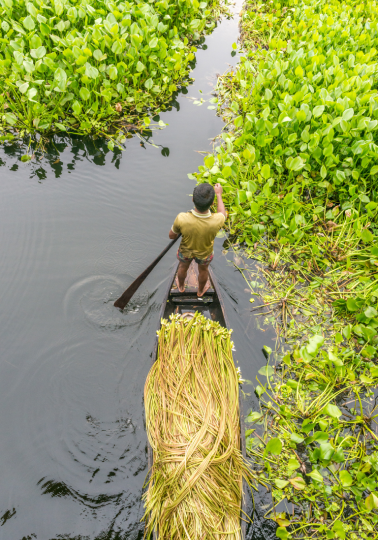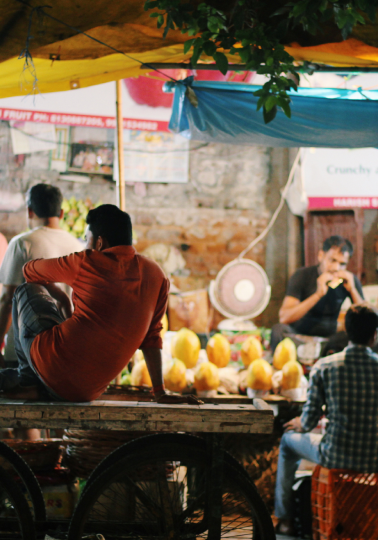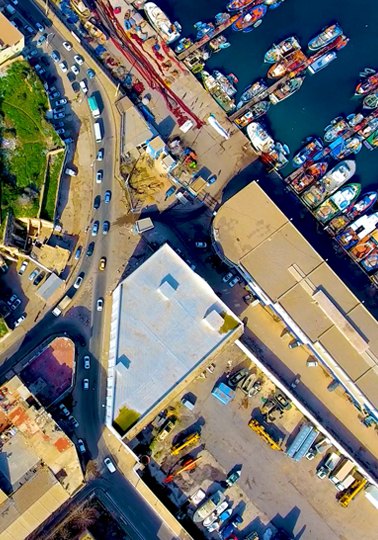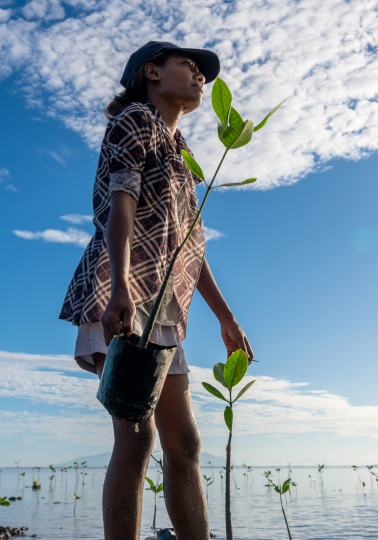COP28 Must Tackle Absence of Financial Resilience in a World of Escalating Disasters and Shocks
A startling piece of information came out of UNDP’s flagship Human Development Report in 2022. Six out of seven people worldwide were plagued by feelings of insecurity - essentially the majority of people on the planet.
Covid was at the heart of this, alongside rising environmental degradation, increasingly severe and frequent disasters, growing conflict within and across countries, and a dangerous debt burden in 60% of low income countries.
And the date behind this was before the Ukraine war, with its associated food and energy price spikes, and well before the current middle east conflict. These conflicts have not only had a devastating impact on millions of people’s lives, but resulted in fractured relationships and alliances everywhere, both within communities and within the community-of-nations.
Development, progress, society, feel and look very fragile at present.
Climate change is central to this growing insecurity. On the one hand it is directly impacting on people - in 2022 alone, close to 185 million people were affected by climate related events that destroy families, homes and the critical infrastructure upon which they depend. And on the other hand, growing climate risk and its affects are massively influencing a wider set of threats.
Consider just the impact of climate on just one issue: livelihoods. Critically important ecosystems and coastlines are being stripped away and agriculture undermined for the long-term through drought and desertification, leading to increasing food security and dependence on social protection and aid, contributing to food price spikes and conflicts over resources as well as forced displacement. This is just one example.
By 2030, the WMO reports that four out of five African countries will not have their own sustainable water resource. The knock-on effects across agriculture, employment, community and country relations, are fearsome if left unmitigated.
COP28 is an opportunity to address the growing need for financial protection across the world
COP28 in the UAE offers an opportunity - one might say yet another opportunity, for the international community to address rising emissions and temperatures, but also the long-residue of risk, that demands significant quantities of financing for both adaptation and resilience.
At best, the world has a patchwork of financial resilience against hazard and shock, and especially for climate-related challenges. Typically, only 5% of the impact from disaster are covered by insurance in developing countries where the average in developed countries in 50%.
In Sub-saharan Africa, less than three people in every hundred have insurance of any kind, including agricultural insurance for smallholder farmers, the bedrock of livelihoods, growth and food security. Small-Island Developing States have lost US$153 billion due to disaster over the last forty years, and the floods in Pakistan in 2022 led to more than US$30 billion in damage and loss. In both cases - over 95% of losses, public and private, were uninsured.
Without adequate financial resilience, the stability of developing countries is undermined, people’s lives and livelihoods are constantly under threat and the financial burden of growing risks is left sitting on the shoulders of every family, community, business and country.
The tools to stop waiting until a crisis strikes before we consider how to finance its impacts are at our fingertips
The current funding for protection, for insurance, risk financing - for risk transfer of all types, is at a pitiful level. Financing for adaptation (which includes some for financial protection) is just 7% of global climate finance flows, despite stark evidence, and all the rhetoric since the Paris agreement.
There is another way of looking at this. How much ‘crisis’ financing is any kind of pre-arranged financing (PAF), that has the potential to significantly increase the predictability, speed and effectiveness of responses to shocks. The very latest research tells us it is no greater than 2.7% a year.
There are countless cases around the world of governments and donors responding financially to crisis after the fact, year on year, and the vast majority of aid financing related to crisis follows the same pattern. We are essentially always waiting for crisis to strike before considering how we finance the damage and loss.
We have the ability to model and analyse risk, and in doing so, not only to reduce risk and adapt but also finance risk. Given this capacity, it does not make any sense at all to wait until a crisis strikes before we consider how to finance its impacts.
The upshot from failing to adequately finance crises before they strike can be looked at from many angles. On the one hand there is the over-reliance on humanitarian financing, 40% of which is usually driven by disaster, not conflict. The Development Initiatives Global Humanitarian Assistance work, a programme I used to run, examines every aspect of the humanitarian dollar. It estimates humanitarian assistance was close to US$40 billion in 2022, a fourfold increase on just ten years before. The UN Humanitarian Appeal for 2023 reached a record-breaking US$51.5 billion. Funding all this through development assistance would equate to about a third of all aid only going towards keeping people alive and protected.
While emergency assistance is unarguably critical, we have to question why the international aid system focuses on financing rising crises after the fact. The outcomes are bad for aid, and worse for countries and communities. In this light, our current financing approach is a perverse misdirection of what development assistance is supposed to be.
Financial resilience is an answer to continuously stretched aid, and the product itself is only half the story. Financially protecting people, their lives, livelihoods and the public assets on which they depend does more than just protect, it also strips away risk and uncertainty from the family, business and the public purse.
This stimulates and incentivises development, because knowing a key aspect of life and living is protected allows everyone-, the individual, business and even government - to think differently, act differently, and invest with a measure of security.
UNDP’s ongoing work to advance insurance and risk financing solutions
At UNDP we are trying to do our part. Our active work with industry and government in 34 countries through the Insurance and Risk Finance Facility is building risk financing solutions, developing the capacity of relevant ministries and regulators, and putting innovative financing into growing national insurers.
The Facility is working on public assets, large scale agriculture and small-scale farmers, building insurance markets in large middle-income countries, developing financial resilience in least-developed countries and deploying specialised financing in fragile states.
Some of the work has been highly specialised, such as the catalytic and critical insurance piece at the centre of the FSO Safer crude oil salvage operation. The FSO Safer demonstrated how insurance is not always about what is protected, but also what is prevented. It not only ensured the pumping of oil from the Safer, and its salvage, but ensured there would not be US$20 billion of environmental damage across the region.
The growing need for financial protection across the world is clear. This is evidenced directly by the Insurance and Risk Finance team, where in the last year we have received 36 requests from countries for support across a range of climate and disaster risk financing and insurance initiatives, requests for which we do not have sufficient resources.
To accelerate country and community resilience at COP28, there are key outcomes we are looking to see.
A massive increase in financing of adaptation, resilience and, financial resilience is first on the list.
International donor governments must shift mindsets and make trackable commitments towards insurance and pre-arranged risk transfer mechanisms, and substantial investments in national capacity to manage risk, financially, including insurance market development.
Philanthropic funders should look to see how their growing influence can be turned to financial resilience, and protect their long-term investments in health, agriculture and governance.
The insurance industry needs to play an increasing role, from modelling to analysis, from technical assistance to constructing insurance products, working closely with governments and the development community. Can the industry also put more finance into product development and premium, helping secure their markets for the long-term? COP28 may provide a good indication of their readiness to do so.
Overall, we need to see much more focus on developing financial resilience in countries where capacity constraints can limit development, such as LDCs, SIDS and fragile states.
And, coming back to COP28, with the outcome of the loss and damage fund, we must ensure that financial resilience is one of the critical pillars of that work, and the financing needed is delivered.
Recent work by the University of Cambridge Institute for Sustainability Leadership tells us that just US$1 billion of financing could provide US$75 billion of financial protection in LDCs and SIDS.
This is what we need to bend all of our minds towards in Dubai, bold visions that can lead to greater financial resilience. If we do not financially protect people and planet, we will always be at risk to the hazards and shocks growing around us each and every day.
Read next:











